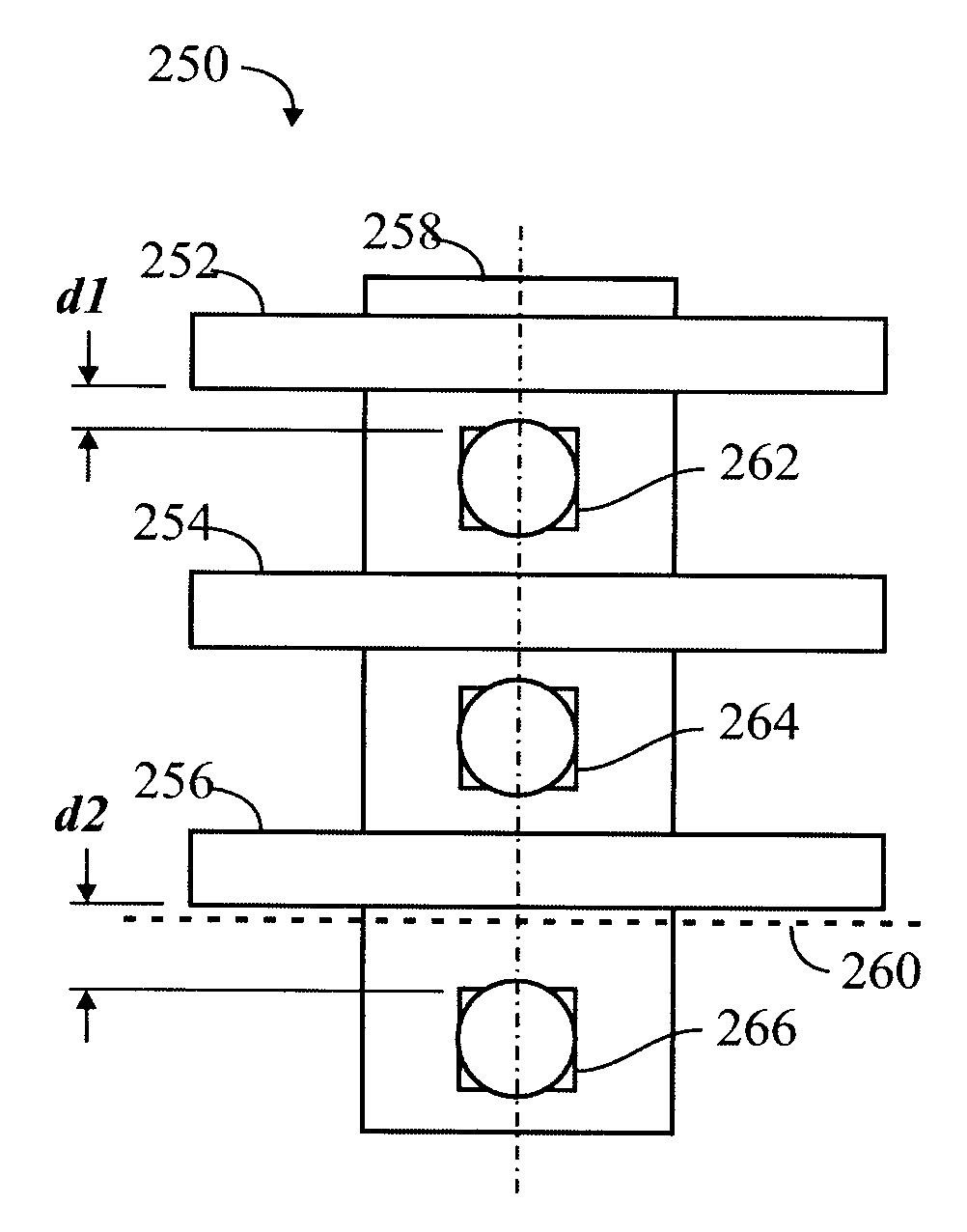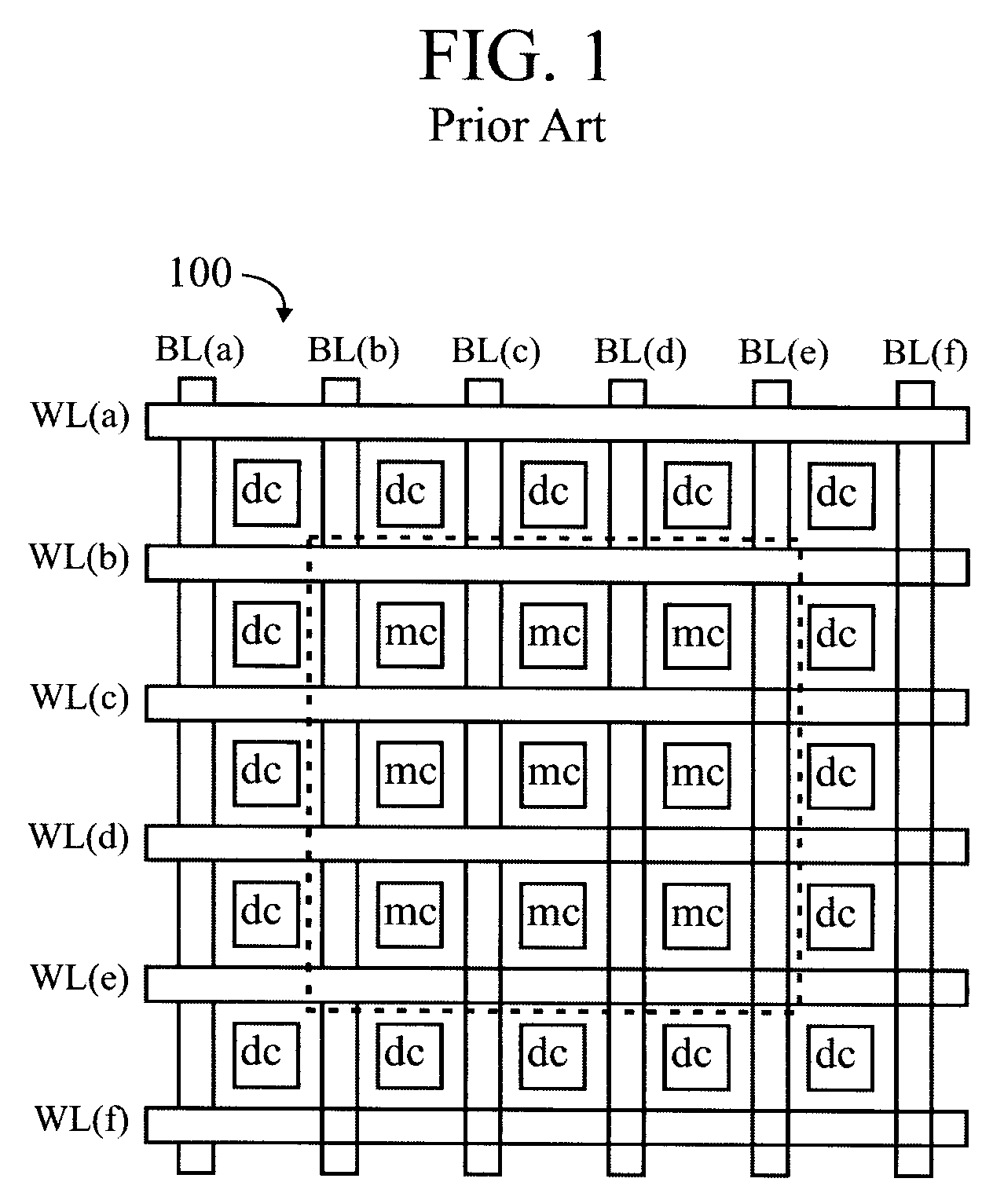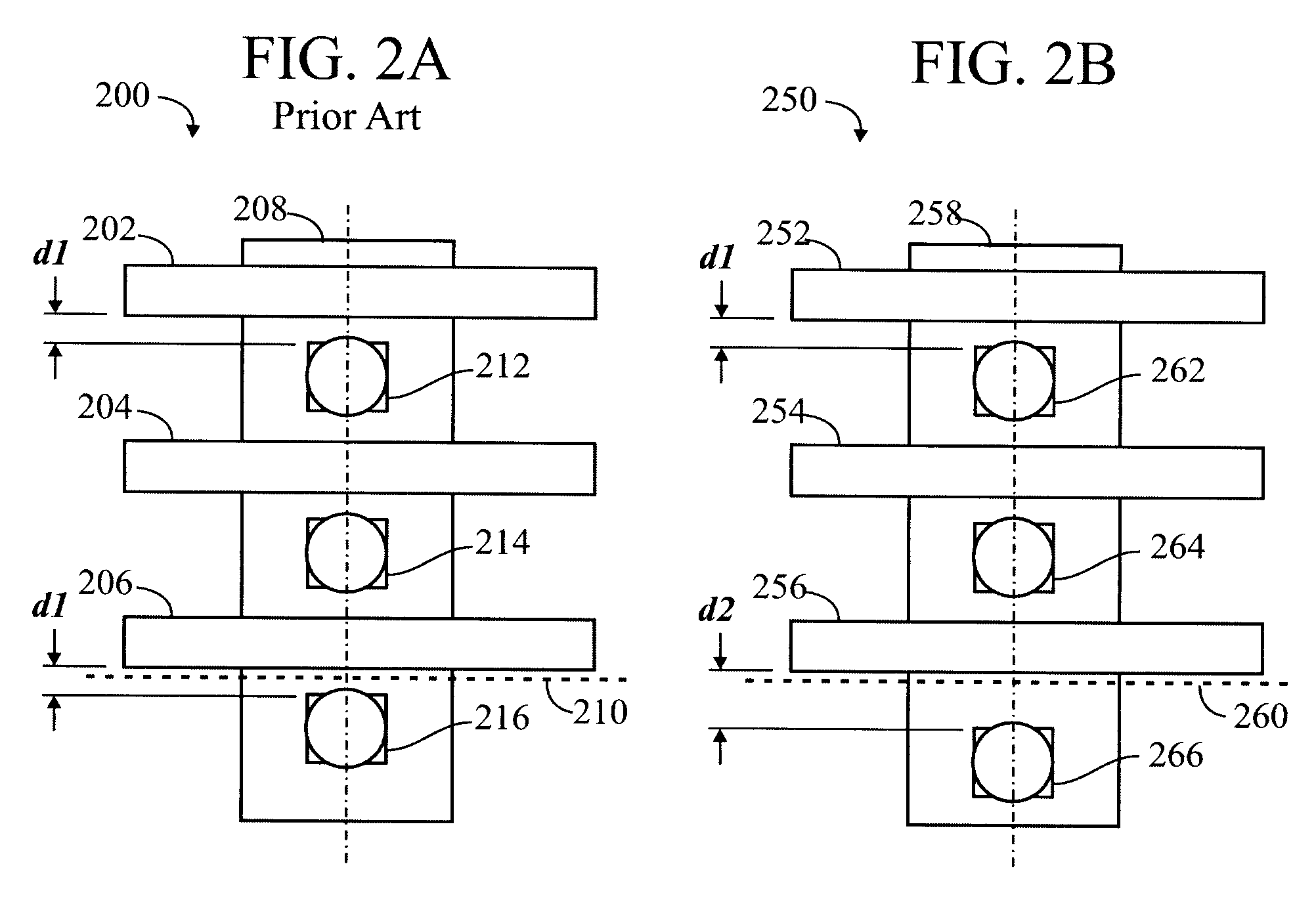Placement and optimization of process dummy cells
a technology of dummy cells and process, applied in the direction of computer aided design, total factory control, instruments, etc., can solve the problems of affecting the efficiency of dummy cells, affecting the yield of dummy cells, and unable to achieve anything inside cells
- Summary
- Abstract
- Description
- Claims
- Application Information
AI Technical Summary
Benefits of technology
Problems solved by technology
Method used
Image
Examples
embodiment 1
[0053]An embodiment of the invention is illustrated with respect to FIGS. 2A and 2B.
[0054]FIG. 2A illustrates a portion of an exemplary memory array 200, according to the prior art. Various layers of materials are illustrated.
[0055]Three polysilicon lines 202, 204, 206 are shown traversing an active area 208. The polysilicon lines may be wordlines, and may be evenly spaced from one another. (The “active area”208 describes an area of silicon where devices may be fabricated, and should not be confused with active array area, such as within the rectangular box in FIG. 1.)
[0056]A dashed line 210 represents an edge of a cell area of the array. Above the line 210 are active memory cells “mc” (see FIG. 1). Below the line 210 are dummy dells “dc” or process dummy patterns (see FIG. 1).
[0057]Three structures 212, 214 and 216, are shown, each of which is placed a distance d1 below a corresponding one of the poly lines 202, 204 and 206. The structures 212, 214 and 216 may be contacts, or bitli...
embodiment 2
[0093]A second embodiment of the invention is illustrated with respect to FIGS. 4A and 4B.
[0094]Some users may not have resources and available yield models to perform all of the calculations in the previous embodiment (Approach 1). The embodiment described hereinbelow (Approach 2) is at lithography / etch simulation level only, and is computationally simpler. The software customers may be different: Approach 1 is for the yield community, and Approach 2 is for the lithography community. Lithographers spend a lot of time maximizing “process windows” and this is geared toward this purpose. Assuming no yield loss in the dummy itself, maximizing process window will typically increase yield as well.
[0095]FIG. 4A is essentially the same as FIG. 2A, and illustrates a portion of an exemplary memory array 200, according to the prior art. Various layers of materials are illustrated.
[0096]Three polysilicon lines 402, 404, 406 are shown traversing an active area 408. The polysilicon lines may be ...
PUM
 Login to View More
Login to View More Abstract
Description
Claims
Application Information
 Login to View More
Login to View More - R&D
- Intellectual Property
- Life Sciences
- Materials
- Tech Scout
- Unparalleled Data Quality
- Higher Quality Content
- 60% Fewer Hallucinations
Browse by: Latest US Patents, China's latest patents, Technical Efficacy Thesaurus, Application Domain, Technology Topic, Popular Technical Reports.
© 2025 PatSnap. All rights reserved.Legal|Privacy policy|Modern Slavery Act Transparency Statement|Sitemap|About US| Contact US: help@patsnap.com



